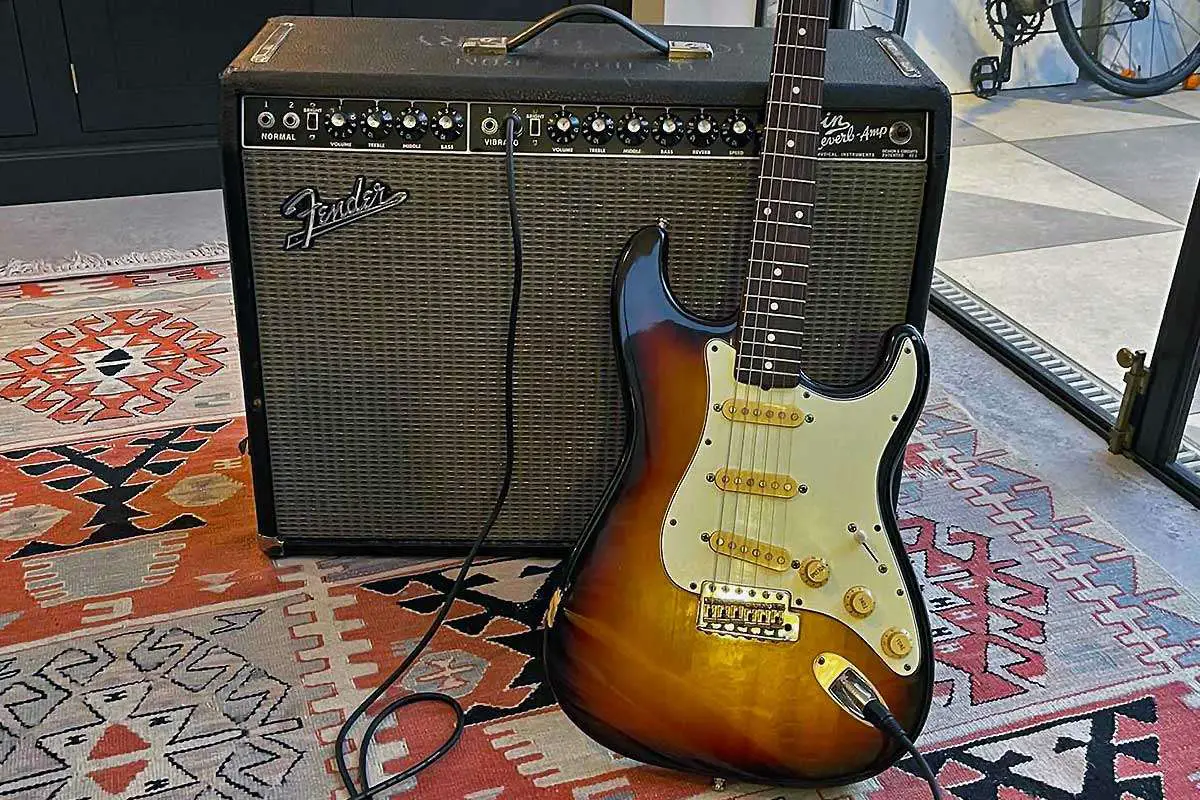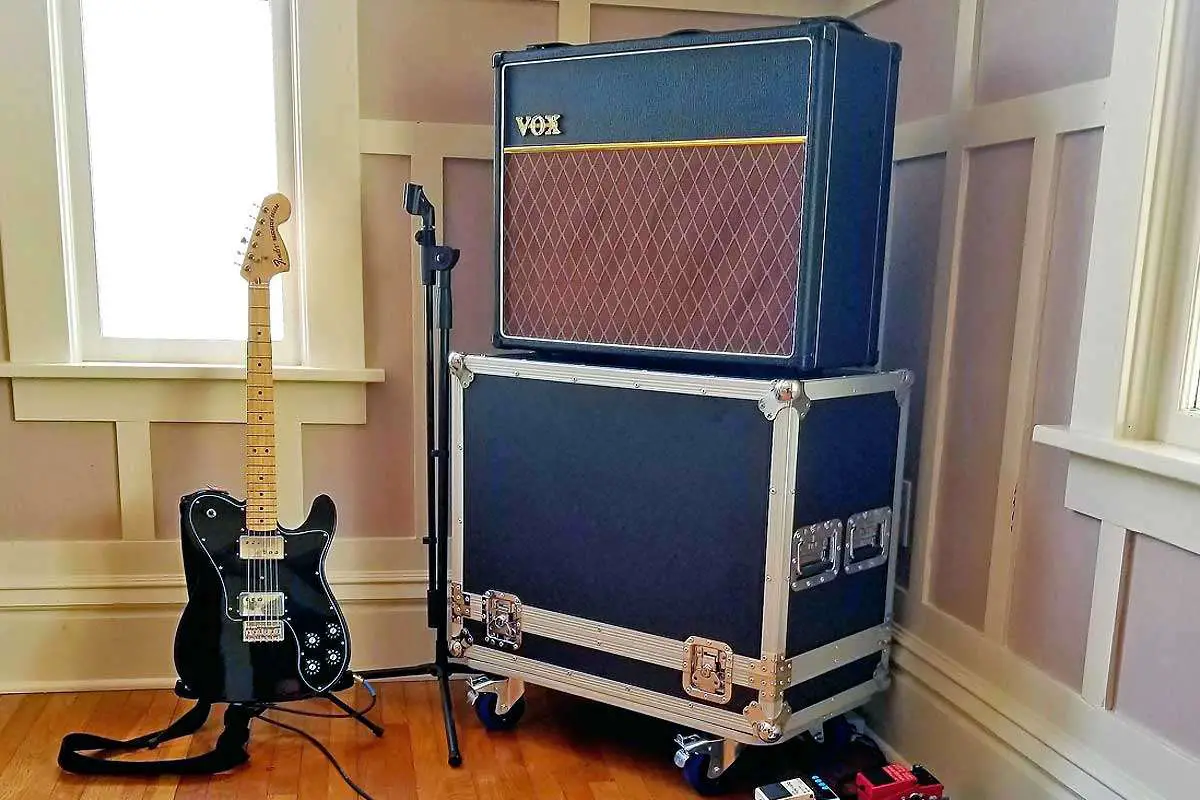Class A tube amplifiers are a coveted piece of gear in the world of guitar players due to their distinctive sound and power delivery characteristics. When you plug into a Class A tube amp, you’re engaging with a circuit design that maintains its power tubes in constant operation throughout the entire signal cycle. This means the tubes are always on, even when there’s no signal, essentially enhancing the amplifier’s responsiveness and potentially creating a richer harmonic tone, which is often described as warm and dynamic.
In the world of guitar amplifiers, power handling and tonal quality are paramount. With a Class A tube amp, you get an amplifier that’s typically lower in wattage but revered for its clear, touch-sensitive sound. This clarity is a result of the linear signal flow and even-order harmonics that are naturally produced by this type of amp, which can be particularly pleasing when paired with the complex audio spectrum of a guitar. The design also results in the amp breaking up or distorting at lower volumes, which can be ideal for achieving that classic overdriven tone without overwhelming volume levels.
Understanding the distinction between Class A and other amplifier classes, like Class AB, is crucial as it affects your sound and playing experience. Class A designs are less efficient, often generating more heat and requiring more maintenance than their Class AB counterparts, which use a push-pull configuration. Nonetheless, the sonic flavor of a Class A tube amp, with its seamless power delivery and articulate sound, continues to be sought after by guitarists aiming for that vintage tone or those looking to experiment with the nuances of their instrument’s audio expression.

Understanding Tube Amplifiers
In exploring tube amplifiers, you’ll encounter intricate components and designs, the pivotal role of vacuum tubes, and the essentials of power supply and output, all of which are fundamental in shaping the sound and performance of your guitar amplifier.
Components and Design
When you pry open the chassis of a tube amplifier, you’re greeted by an array of electronic components interconnected to create the unique sound only tubes can provide. The cathode and plate form the ends of a vacuum tube, intertwining with other elements like resistance and capacitors to modulate the electrical signals. Electric current flows through the vacuum tube, where the varying voltage levels and resistance help sculpt the amplifier’s voice.
The Role of Vacuum Tubes
Vacuum tubes serve as the heart of a tube amp, providing the classic warmth and dynamic response favored by guitarists. The tubes amplify your guitar’s signal by controlling the flow of electrons within the vacuum. Consider the cathode, which releases electrons when heated, and the plate, which collects these electrons; their interaction defines the amp’s character.
Power Supply and Output
Tube amps rely on a power transformer to convert the incoming alternating current (AC) into the required voltages. It carefully manages the DC voltage that powers the tubes’ plates and filaments. Capacitors then smooth the current flow, and with the presence of the power transformer, distribute an even and reliable energy source to deliver your amp’s output with precision and strength.
Related: Pre-Amp vs Power Amp
Class A Tube Amps Explained
When you hear about Class A tube amps in relation to guitars, you are often hearing about the purest form of tube amplification known for its warm and rich harmonic content. Let’s dive into how these amplifiers operate, their biasing methods, and the unique sound characteristics they offer.
Class A Operation
Class A tube amps function differently from Class AB or Class B amplifiers. In a Class A amp, the output tubes are conducting electricity for the entire cycle of the input signal, which means they’re always on, even when there’s no signal. This continuous operation leads to less crossover distortion compared to Class AB or Class B amps. A single-ended Class A amp uses one output tube, while a push-pull configuration utilizes two or more tubes, achieving higher power output and symmetrical distortions.
Cathode Bias vs. Fixed Bias
The bias of an amplifier refers to the adjustment of current flowing through the output tubes when there’s no audio signal. You can bias a Class A amp in two primary ways: cathode biasing or fixed biasing. Cathode biased amps typically have a warmer sound with more gradually introduced distortion. Fixed biasing, on the other hand, may offer more headroom and can be found in both Class A and Class AB designs. Your choice between cathode biased and fixed biasing affects the amp’s response and tone.
Sound Characteristics
The sound characteristics of Class A tube amps are marked by a natural, smooth, and continuous envelope of harmonics which can enrich your guitar’s tone with a distinctively ‘musical’ distortion when driven hard. Due to the continuous operation of the output tubes, Class A amps provide a responsive and dynamic playing experience. You may find that these amps produce a distinctive sound quality even at lower volumes, which is especially favored for studio recording or intimate performance settings. The interplay between harmonics and distortion creates a complex and pleasing sonic palette that is highly sought after by discerning guitarists.
Related: What Are Class D Amplifiers
Iconic Class A Tube Amp Models
Iconic Class A tube amps are renowned for their rich and harmonic tones. These models have a distinct sound that has become a mainstay in music production, and many guitarists cherish them for their warm, clean, and full sounds.

Fender’s Classics
Fender Twin: Favored by many guitarists for its clear, pristine clean tones, the Fender Twin has been a staple in the Class A tube amp category. Its lush reverb and crisp sound have made it a go-to choice for studio and live performances alike.
Vox’s Vintage Offerings
Vox AC30: A powerhouse loved for its jangly top-end, the Vox AC30 has been integral to the British invasion sound. Its chime and mid-range warmth are legendary, inspiring countless musicians over the decades.
Vox AC4: The Vox AC4 offers a more compact solution without sacrificing tone. It’s a perfect example of a lower wattage amp with a big sound, favored for studio applications and smaller venues.
Boutique and High-End Alternatives
Victoria Regal: You might find yourself enamored by the Victoria Regal, which stands out for its handcrafted quality and authentic vintage sound.
Morgan: Morgan amps, like the AC20, add a modern touch to the classical designs and are noted for their exceptional build quality and clarity.
Dr. Z: The amps from Dr. Z ooze with character and offer a variety of tonal ranges, making it a versatile choice for your Class A needs.
